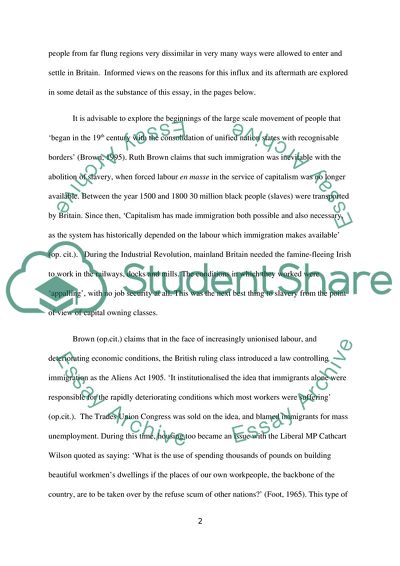Cite this document
(Racism And Immigration In Britain Case Study Example | Topics and Well Written Essays - 3500 words, n.d.)
Racism And Immigration In Britain Case Study Example | Topics and Well Written Essays - 3500 words. Retrieved from https://studentshare.org/sociology/1731008-sociology-critically-explore-the-root-causes-of-the-outbreaks-of-racial-unrest-in-the-uk-such-as-those-which-occurred-in-brixton-bradford-and-broadwater-farm
Racism And Immigration In Britain Case Study Example | Topics and Well Written Essays - 3500 words. Retrieved from https://studentshare.org/sociology/1731008-sociology-critically-explore-the-root-causes-of-the-outbreaks-of-racial-unrest-in-the-uk-such-as-those-which-occurred-in-brixton-bradford-and-broadwater-farm
(Racism And Immigration In Britain Case Study Example | Topics and Well Written Essays - 3500 Words)
Racism And Immigration In Britain Case Study Example | Topics and Well Written Essays - 3500 Words. https://studentshare.org/sociology/1731008-sociology-critically-explore-the-root-causes-of-the-outbreaks-of-racial-unrest-in-the-uk-such-as-those-which-occurred-in-brixton-bradford-and-broadwater-farm.
Racism And Immigration In Britain Case Study Example | Topics and Well Written Essays - 3500 Words. https://studentshare.org/sociology/1731008-sociology-critically-explore-the-root-causes-of-the-outbreaks-of-racial-unrest-in-the-uk-such-as-those-which-occurred-in-brixton-bradford-and-broadwater-farm.
“Racism And Immigration In Britain Case Study Example | Topics and Well Written Essays - 3500 Words”, n.d. https://studentshare.org/sociology/1731008-sociology-critically-explore-the-root-causes-of-the-outbreaks-of-racial-unrest-in-the-uk-such-as-those-which-occurred-in-brixton-bradford-and-broadwater-farm.


